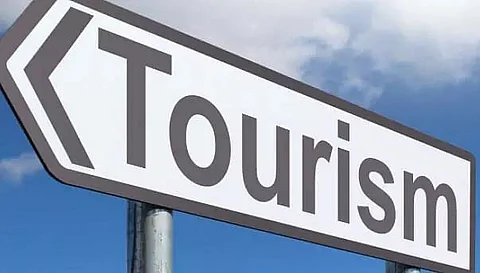
- Home
- Live Blog
- Breaking News
- Top Headlines
- Cities
- NE News
- Sentinel Media
- Sports
- Education
- Jobs

Issues of putting tourism on the Concurrent List of the Seventh Schedule are more complex in the North-eastern states than perceived. A restricted travel regime coupled with complexities of land laws will give rise to a plethora of legal issues if the proposal is pushed without adequate consultation and clear demarcations of legislative powers. A Report of the Parliamentary Standing Committee on Transport, Tourism and Culture has revealed that the Ministry of Tourism has initiated a move to include tourism in the Concurrent List to put the sector on the national agenda. Even though the tourism industry at the national level has been lobbying for the proposal for over a decade, the ravaging impact of the COVID-19 pandemic appears to have given fresh impetus to the proposal at the government level. The Confederation of Indian Industry (CII) in its pre-budget memorandum before Union Budget 2021-22 pushed for putting tourism on the Concurrent List after international travel restrictions as well as restrictions on interstate travel due to the pandemic hitting the Indian tourism and hospitality industry hard. As Tourism currently does not figure in either the Union List or the State List, the CII lobbied for putting it on the Concurrent List so that the Centre and the State governments can formulate coordinated policies for the growth of the tourism sector. The Constitution grants concurrent powers to the Centre and States to make laws on subjects included in the Concurrent List, but in case of a conflict, the Central law prevails over state laws. Inner Line Permit (ILP) regime is currently in force in four North-eastern states of Arunachal Pradesh, Nagaland, Manipur and Mizoram while clamour for ILP regime is growing louder in Meghalaya and echoed by some organizations in Assam as well. Besides, the autonomous councils in the region under the Sixth Schedule of the Constitution also enjoys legislative powers concerning subjects transferred to these councils under this power-sharing governance model, unique to the region, which needs to be factored in while pushing the proposal to put tourism in the Concurrent List. A synergised approach by the Centre and the States to remove obstacles of multiplicities of laws can help the rapid growth of the travel and tourism sector. However, the legal complexities, if not addressed beforehand, have the potential to make the issues of availability of land, travel regime much more complicated and derail the primary objective of growth in the tourism sector. Such complexities notwithstanding, the implementation of several key recommendations of the parliamentary panel holds promises for the COVID-hit tourism sector in the region. The panel pointed out that most tourist destinations in the region barring a few in Assam and Meghalaya are reachable only by roads but these roads lack wayside amenities including toilets and recommended to the Ministry to address the problem. The Ministry's reply on the status of implementation of this recommendation reveals that a list of 50 tourism destinations in the region has been submitted to the Ministry of Road Transport and Highways (MoRTH) for improvement of road connectivity, setting up wayside amenities, putting up signages and beautification. A list of 114 destinations in the region to be taken up in the second stage has also been forwarded to the MoRTH and North-eastern states pursuing the proposals can expedite their implementation. The growing popularity and publicity of prime travel destinations in the region have brought huge opportunities for the tourism sector. The recommendations by the parliamentary committee for showcasing different facets of tourism products and promote niche tourism products such as adventure tourism, golf tourism, polo tourism, wildlife tourism put north-eastern states as key stakeholders in the 'paradigm-shift.' The recommendation that the Ministry, in coordination with the States and Union Territories, should have a targeted marketing campaign to communicate the safety measures at various tourist attractions to educate tourists and build their confidence can also be implemented irrespective tourism is put on the Concurrent List or not. The region is still in the grip of the second wave of the pandemic and looking at the possibilities of a third wave hitting, states prioritizing projects in the tourism sector through judicious and timely utilization of earmarked funds can ensure more flow of tourists when states fully unlock for a new tourism season in Winter. The proposal to put tourism in the Concurrent List may raise debatable issues and require legal expertise to settle them. Nevertheless, it will provide an opportunity for the states and the Centre to explore the mechanism of better coordination for making India a prime destination of global tourists and generate more revenue from the sector. For North-eastern states, the perceived complexities due to travel regime and laws governance and power-sharing unique to the region can be leveraged to negotiate for more central investments for the development of destinations in the region not just to attract domestic tourists but also adventure and nature tourists from the world over.